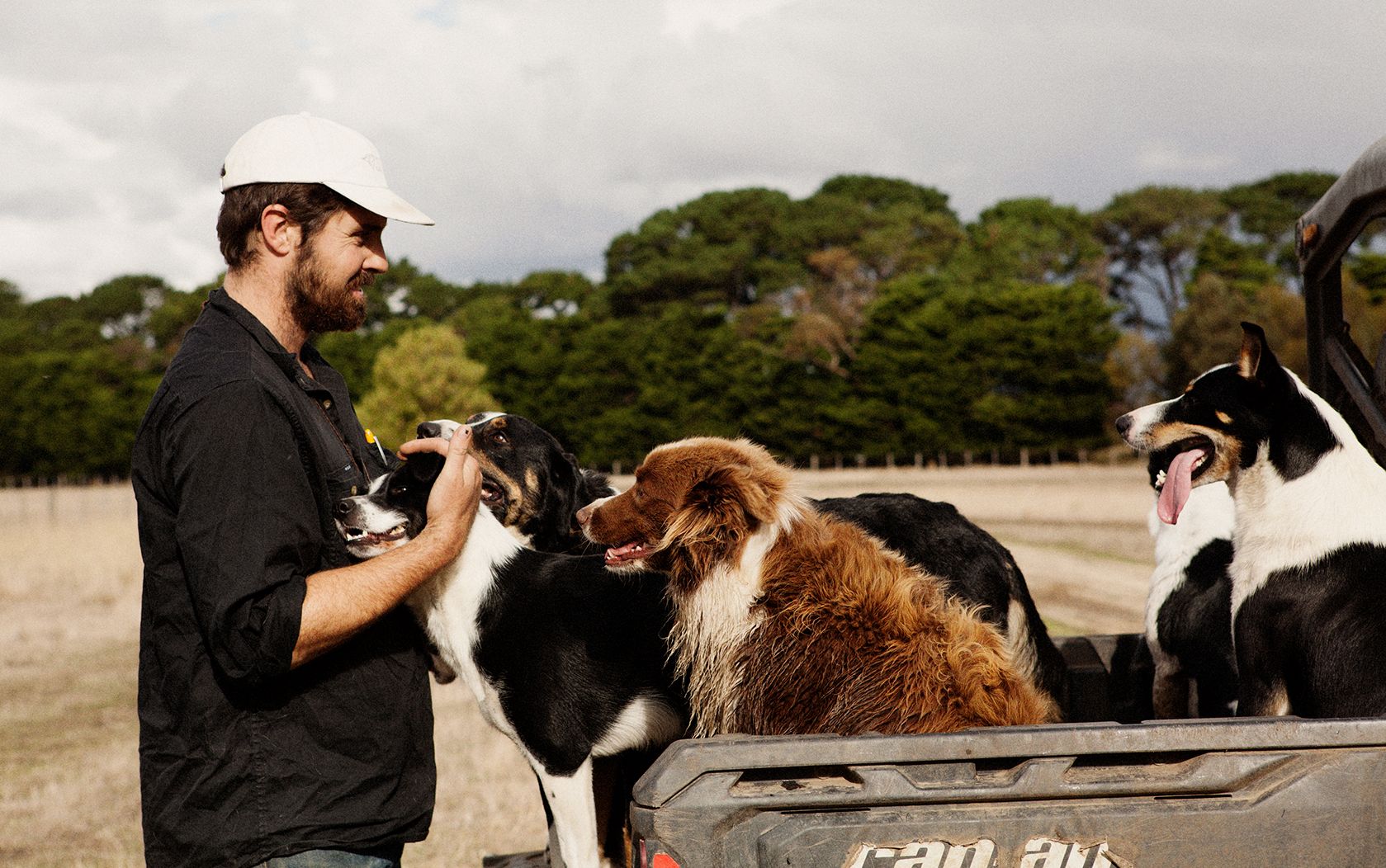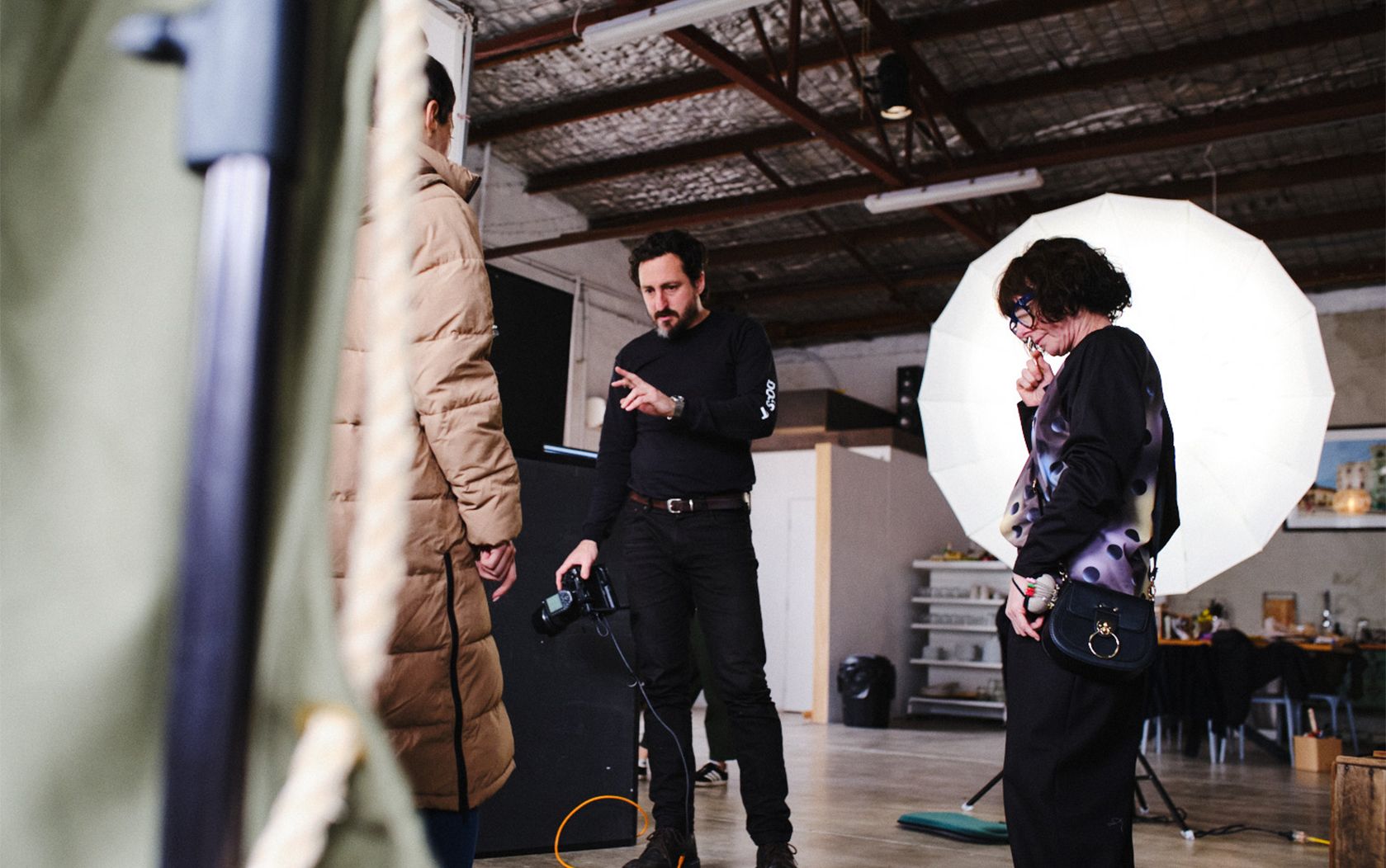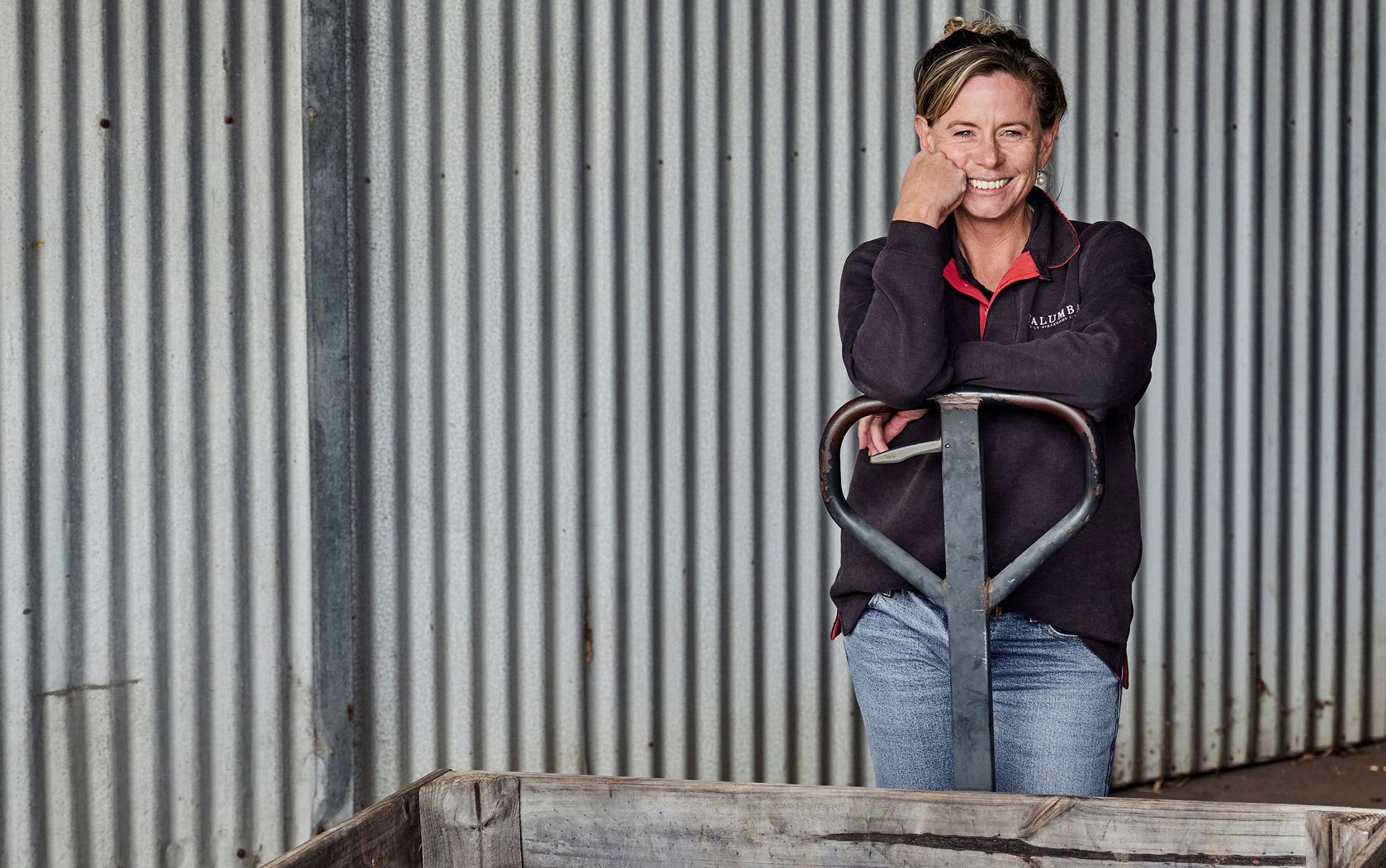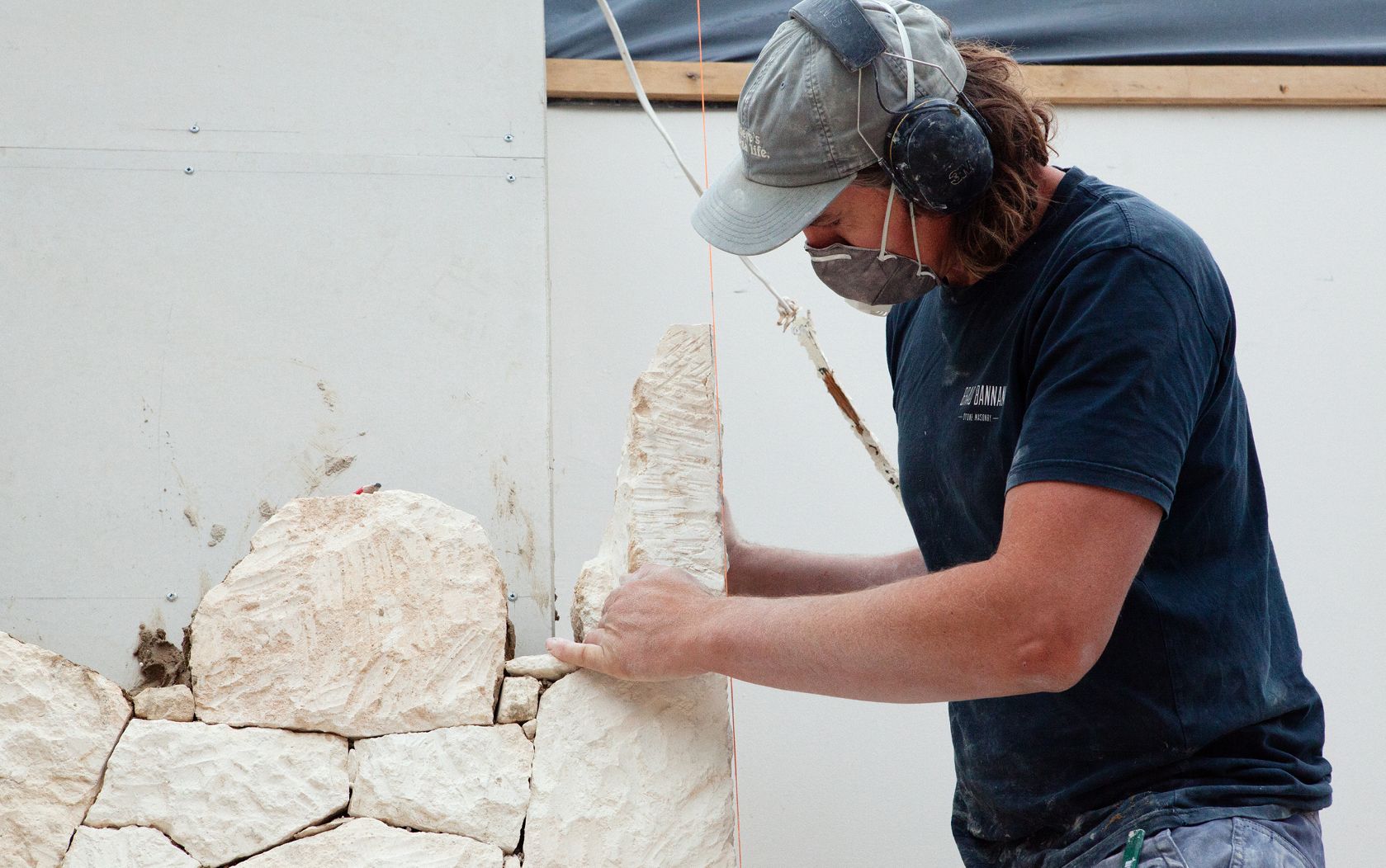Whether using a chisel and hammer or going all out with the tools, Brad Bannan has
carved out a successful career as a stonemason and principal of his own practice.
Working in some of the most scenic parts of Victoria, Brad has added his own style of
natural beauty to private homes and wild landscapes — intricately constructing walls,
paths, structural elements and landscaping features.
Whether using a chisel and hammer or going all out with the tools, Brad Bannan has carved out a successful career as a stonemason and principal of his own practice. Working in some of the most scenic parts of Victoria, Brad has added his own style of natural beauty to private homes and wild landscapes — intricately constructing walls, paths, structural elements and landscaping features.
Traditional stonecraft is quite a specialised area.
What made you choose this path?
I was always fascinated by Western District farmer
walls on family trips as a kid. In my gap year, I worked
as a carer in Kent, and on weekends I’d help this guy
in the village restore an old limestone wall. During my
apprenticeship in landscape construction, stonemasonry
was a semester we did in trade school. There were
three of us who really took a liking to it. I stayed in
Melbourne, laying stone paving and concentrating
on hard landscapes, while one of the guys went to
Edinburgh laying rubble, and the other learned carving
for restoration work in Bath. When they came back, we
all started working together.
And your business grew from there?
We were young and began sub-contracting for the
bigger stonemasonry mobs in Melbourne, eventually
becoming preferred contractors and now, industry
leaders — which all happened over a period of nearly
18 years. The best thing about working in Australia is,
unlike the UK, we’re not bound by any heritage dogma
— for a village or a particular type of stone or way to lay
it. People are allowed to build absolute monstrosities,
but they also have the creative freedom with different
mediums when it comes to stone.
Do you get to roam the state to different sites and places with your work?
Being based in the city, we’ll range from here to country Victoria. Most of our work is in the Mornington Peninsula and more recently, along the Great Ocean Road. The projects are mainly high-end private homes with some civic work. At the new Grampians Peaks Trail, we made steps for the amenities. A lot of it had an indigenous overlay, so the elders would come out and tell us what stones we could break down and use — slinging oulders out of the bush on winches to make stone staircases for hikers.
With your domestic projects, do you encourage clients to use local materials?
I use a lot of sandstone from Gippsland and bluestone from Port Fairy. Whether it’s wistow from South Australia or West Australian limestone, it’s solid stone and local all the way. But we live in a time when there’s so much veneer coming in from overseas, sold as premium product. It’s important that we use indigenous stone because the geology is better, the product is great, we know where it’s come from, and you’re supporting local quarrymen. You don’t know what happens overseas: kids in quarries cutting stone with no masks on, pretty crazy things.
Do you get to roam the state to different sites and
places with your work?
Being based in the city, we’ll range from here to
country Victoria. Most of our work is in the Mornington
Peninsula and more recently, along the Great Ocean
Road. The projects are mainly high-end private homes
with some civic work. At the new Grampians Peaks
Trail, we made steps for the amenities. A lot of it had
an indigenous overlay, so the elders would come out
and tell us what stones we could break down and use
— slinging boulders out of the bush on winches to make
stone staircases for hikers.
With your domestic projects, do you encourage clients
to use local materials?
I use a lot of sandstone from Gippsland and bluestone
from Port Fairy. Whether it’s wistow from South
Australia or West Australian limestone, it’s solid stone
and local all the way. But we live in a time when there’s
so much veneer coming in from overseas, sold as
premium product. It’s important that we use indigenous
stone because the geology is better, the product is
great, we know where it’s come from, and you’re
supporting local quarrymen. You don’t know what
happens overseas: kids in quarries cutting stone with
no masks on, pretty crazy things.
Do you and your team visit the quarries?
There’s one in particular owned by a third-generation
quarryman. I love all that stuff, and they love how
interested you are in the process. Because he’s older
now, I have to allow a couple of days to go there and
drag that stone out, put it on the giant hydraulic splitter,
and break it down to the sizes I want. Once it’s on-site,
every stone is cut and dressed to fit. In the end, it’s
about 30-minutes for each stone that goes in a wall.
What are some of the most satisfying aspects
of the job?
I’m really lucky being in an artisan trade. Very rarely do
you think, ‘Hmm, I don’t know about that’. Everything
has its special place. I love working with bluestone,
maybe from growing up in Melbourne. I’ll go to salvage
yards where they’ve ripped up an old laneway or curb.
It’s so robust, we’re able to break it down with tungsten
chisels and reface it, so it looks brand new. You think,
how good is that — it’s already served an incredible
purpose, and now it’s part of a beautiful home.
And how do you relax when you’ve downed tools?
I have two little boys, aged three and six, so there’s
not too much relaxing! I was doing a lot of stone carving
and general art at home, especially with the kids.
But I’m into a lot of different things: I go hard into a fad
then switch it up. Just before Christmas, I did an 11 —
day bike ride from North Fitzroy to Canberra, over the
Victorian Alps and Kosciusko Ranges. It was 1,000km
with a 25,000m elevation, carrying all our camping gear.
I look forward to when the kids are older — to take
them hiking, going overseas, and things like that.
I just love adventure.





